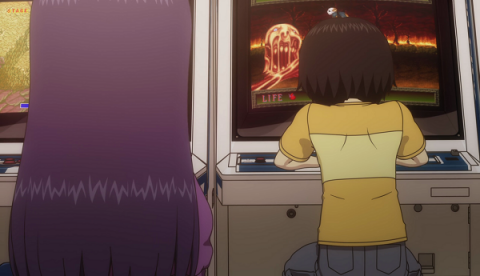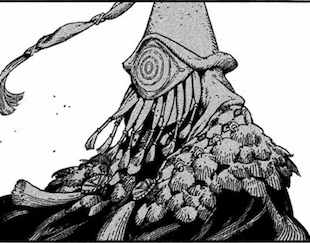Are you familiar with Rumiko Takahashi, a manga artist who has been active since the 1970s and is still active today? She's one of the most well-known female manga artists, so many readers may have heard of her at least once. One of the defining features of Rumiko Takahashi's work is the inclusion of numerous captivating female characters. Even if you don't know Takahashi's name, many readers are likely familiar with her heroine, Lum. Lum is the heroine of "Urusei Yatsura," which was serialized about 40 years ago, so while it's been a while since her first appearance, her popularity hasn't waned. Starting with Lum, all of the heroines who appear in Takahashi's works are well-known and continue to enjoy enduring popularity. In this article, we'll explore the appeal of the heroines in Takahashi's works, starting with Lum, one of Japan's most famous heroines, while unraveling the history of heroines in manga!
Heroines Still Deeply Loved Today

The heroines created in Takahashi's works continue to enjoy strong fan support. In terms of character recognition, they are attracting attention overseas, rivaling Doraemon and Pokémon.
Lum from "Urusei Yatsura," Kagome Higurashi from "Inuyasha," Akane Tendo from "Ranma 1/2," etc.

Specific examples include famous heroines such as Lum from "Urusei Yatsura," Kagome Higurashi from "Inuyasha," and Akane Tendo from "Ranma 1/2." Furthermore, even minor and minor characters in the series combine Takahashi's comical personalities with stylish looks, making them widely popular.
"Urusei Yatsura" to be re-animated in 2022

As a result of this continued popularity, Takahashi's masterpiece, "Urusei Yatsura," has been re-animated, further garnering attention for characters from Takahashi's world in recent years.
Heroines Loved by the Young Generation

As you can see, the characters in Takahashi's works are beloved by people of all ages and genders. Even in today's world where social media is mainstream, many teenagers use Takahashi's heroines as their profile pictures, and these characters have become accepted as a fashion statement by today's young people.
Why is Lum considered the original moe character?

Next, I'd like to explain the heroines who appear in Takahashi's works, looking back at their history. In particular, Lum from "Urusei Yatsura" has had such a profound influence on current works that she's been called the "original moe character," so be sure to take a look back at her achievements.
The Era of Gekiga Begins in the 1960s

Before Takahashi-sensei began his career as a manga artist, the anime and manga world was in the "gekiga" era. This was an era in which masculine, masculine characters, such as those in "Star of the Giants" and "Golgo 13," were popular. Following Japan's rapid economic growth, men began to feel a strong sense of "working 24 hours a day to develop Japan," and this kind of masculinity was in high demand.
Antithesis to Osamu Tezuka

The era of gekiga was also an antithesis to the works of Osamu Tezuka, the founder of manga. Tezuka, who once laid the foundations of manga culture, deeply captivated children with his overwhelming drama and pacifist works. Having experienced war himself, Tezuka was known for his style of writing, which featured gentle stories that were easy for children to understand and approachable, rather than extreme depictions, and soft, cursive lines.
Masculine Men and Feminine Women

Amid this climate, as postwar artists began to emerge, more radical styles appealing to men began to gain attention. This "gekiga" style of manga continued to be popular for over a decade, depicting men as more masculine and women as more feminine. Gekiga works rarely featured women, and women were perceived as weak characters for the sake of the ever-active men.
The Gekiga Era Ended in the Early 1970s

This Gekiga era also came to an end with the end of the economic boom of the early 1970s. Japan's economic downturn, which began with the oil crisis, alienated the public from the energetic Gekiga works that had continued to thrive.
She appears as a heroine with a plethora of character traits, including a dialect, sexy, jealous, and alien-like qualities.

The 1970s marked the end of Japan's traditional period of rapid economic growth, and a time when Japan no longer sought the same kind of "sweaty hard work." It was in this context that Takahashi's smash hit series, "Urusei Yatsura," finally began serialization in 1978. In "Urusei Yatsura," the heroine Lum is portrayed as a sexy character, but also a character with a dialect, jealousy, and other character traits, giving her a charm not found in other heroines.
A Perspective Unique to a Female Manga Artist

While there have been works aimed at women that have focused on female characters, there have been few works like Takahashi's that are romantic comedies that men can also read, yet still give female characters unique personalities and portray them as compelling characters that you can't take your eyes off of. The exploits of such unique female characters are truly a perspective unique to Takahashi, a woman.
The Golden Age of Female Characters Begins

Rumiko Takahashi's works marked a turning point for the diversity of female anime characters. Eventually, more attractive and adorable female characters than male characters appeared, ushering in the heyday of moe anime.
Fighting Female Characters

Female characters in Rumiko Takahashi's works have a wide range of roles, just like their male counterparts, and are often portrayed as fighting partners alongside male characters. While unheard of in gekiga manga from a generation ago, Rumiko Takahashi's works have given birth to the "fighting female" character.
Struggles Unique to Women

The worries and inner conflicts unique to female characters are portrayed with exceptional realism. As Takahashi herself is a woman, this work excels in portraying life-sized women.
Captivating the Hearts of Male Fans

With such realistic portrayals of women's inner lives and the portrayal of fascinating female characters with richer personalities than you'd encounter in the real world, Takahashi's works have succeeded in capturing the hearts of not only female fans, but also male fans.
Somewhat Unreliable Male Characters

Not only female characters, but male characters too, have flaws, no matter how cool they are. This is also a depiction that would not have been possible in the perfect man of the gekiga era. It seems that women are sometimes more attracted to a man who is basically perfect but has a few flaws than a man who is perfect in every way. This character perfectly reflects this ideal man as perceived by women.
The Legacy of "Strong Women"

In this way, the attractive and strong female characters created in Takahashi's works have been passed down to future works. From here, I would like to introduce the influence that Takahashi's works have had on future generations.
Integration with Works Aimed at Men

Takahashi's works are known for their popularity among both female and male fans, and this same quality would later be integrated into his works aimed at men.
Diverse Characters Create Deep Drama

In works aimed at men, such as gekiga (dramatic comics), where female characters have become stereotyped, introducing a more diverse range of female characters has led to the creation of deeper drama by creating more complex psychological portrayals of the characters.
This tradition continues into the "real robot animation" of the 1980s and beyond.

In particular, since the 1980s, real robot animation has featured numerous attractive female characters, who have come to be treated as the face of the work. Male characters have also evolved from being strong men to characters with some weaknesses that are more appealing to women, and the influence of Rumiko Takahashi's characters can be felt.
Summary
What did you think? This time, we briefly summarized the achievements of Rumiko Takahashi, the creator of works such as "Urusei Yatsura." The characters that appear in Takahashi's works continue to garner support from a wide range of generations, so be sure to keep an eye out for them.




